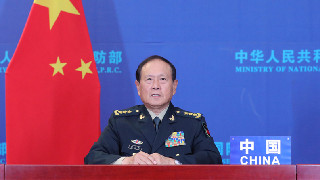By Wen Weiru
Japanese media reported that Japan’s prime minister and president of the ruling Liberal Democratic Party (LDP) Fumio Kishida reshuffled the cabinet and the LDP leadership on August 10. Analysts said several cabinet members, including the defense minister, have been replaced, which indicates that Japan may change its defense policy by modifying the progressive approach left by Shinzo Abe.
Old face as new defense minister
Japanese Chief Cabinet Secretary Hirokazu Matsuno released the list of new cabinet members, according to which only five of the previous 19 members have remained. In the defense sector, three of the four members of the National Security Council (NSC) have remained, namely Fumio Kishida, Hirokazu Matsuno, and foreign minister Yoshimasa Hayashi, while 66-year-old Yasukazu Hamada was appointed the new defense minister, the second time he filled this role.
According to Japanese media, Yasukazu Hamada, a seasoned defense minister, supports Fumio Kishida in modifying the Constitution of Japan and lifting the ban on collective self-defense. Now the Kishida administration is pushing to increase Japan’s defense budget to 2% of GDP, which is heatedly debated in the cabinet and the Diet, but Yasukazu, being of no faction, is well-positioned to quench the noises.
Japan is obsessed with breaking through the post-WWII restrictions
According to analysts, Japan has been trotting to break away from the post-WWII restrictions in recent years in an attempt to develop independent military capacities.
On the one hand, it has moved faster to develop a defense strategy consistent with America’s to further cement their military alliance and cooperation. Japan will issue three strategic documents on the diplomatic and security fronts this year, namely the revised National Security Strategy (NSS), National Defense Program Guidelines (NDPG) and Mid-Term Defense Program (MTDP). This is an important step where Fumio Kishida tries to codify his security judgment, strategic intention, and political pursuit into law, including strengthening the military alliance with the US, significantly increasing defense expenditure, and developing offensive armed forces. Given the limited time, he kept foreign minister Yoshimasa Hayashi and appointed the new, experienced defense minister Yasukazu Hamada in hopes of reaching his goals as soon as possible.
On the other hand, Japan is constantly hyping external threats, trying to gain domestic and international support for its re-development of independent military forces. Fumio defined his new cabinet as one capable of coping with crises related to warfare and armed conflicts and resolutely implementing the government’s policies. He said at the press conference on the very day of the cabinet reshuffling that Japan is in an increasingly serious security environment, and reiterated his plan to fundamentally enhance Japan’s defensive capability in five years. We cannot rule out the possibility that the country, under the excuse of “developing capacities to independently respond to surrounding situations”, may pave the way for revising the Constitution of Japan by manipulating public opinions.
It’s worth noting that the LDP-Komeito coalition bagged over half seats at the 26th House of Councillors election held not long ago, driving their total seats to 146 taking into account the 70 unchanged ones. As a result, the pro-Constitutional modification forces had more than 2/3 of the seats in the House of Councillors, enough to move a motion for the modification.
In general, reshuffling the cabinet is Fumio Kishida’s way of building his own governance style in the post-Abe era. Where his defense policy is heading and whether it will continue to dance to America’s tune is still to be seen.











